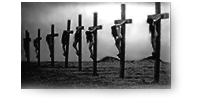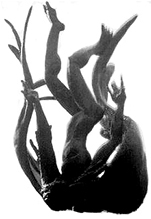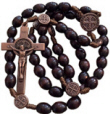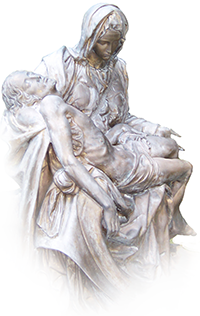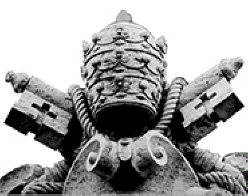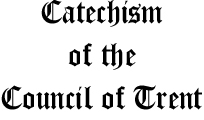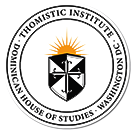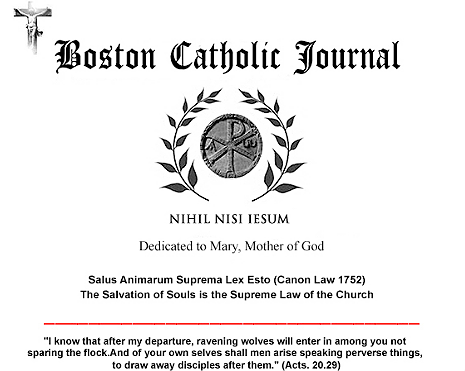
CRITICAL CATHOLIC COMMENTARY
in the Twilight of Reason
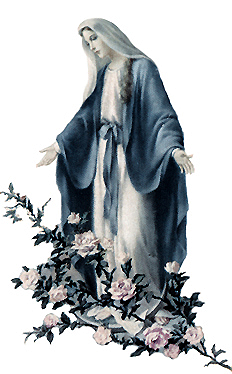
Mary, Conceived without
Sin,
pray for us who
have recourse to thee
___________________________________________________________________________
“… or in another language.”
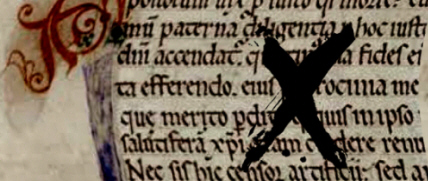
Why Leo’s Eliminating Latin as
the Language of the Church ...
will Result in Irrecoverable Loss
for the Catholic Church
§1. The curial institutions will normally draft their
acts
in Latin or in another language.”
*
In
less than six months, Pope Leo
XIV has made one of the most significant steps toward the
de-construction of Catholicism since 1963
The Roman
Catholic Church
as a magisterial institution
possessed of the inexpungable character of divine certainty,
has written, decreed, formalized, legislated and expressed itself
in Latin — the language through which it has authoritatively
taught for at least 1,600 years and 10 months prior to
Pope Leo XIV’s shocking and sweeping mandate on November 24,
2025 that pronouncements of the Church’s curial offices are
no longer to be exclusively rendered in Latin, but “in Latin
or in another language.”
Despite rhetoric to the contrary,
this is a monumental shift in paradigm: until Leo XIV, every
“Curial act” — until last month — had been “drafted” by
default in Latin as it had been for over 1,600 years.
First of all, are we to really understand
that the directive to use “Latin or … another language” applies
only to deliverances of the Roman Curia, and second,
that such deliverances themselves are to be understood as “drafts
only” and not final forms? And in the end, does it really matter?
A Dramatic
Shift in Paradigm
I will argue that there are
not simply compelling, but indisputable reasons that the Roman
Catholic Church, prior to Leo, used Latin not as just a theological,
but a precise juridical, pedagogical, archival, and institutional
language.
Why, in a dramatic shift of
paradigm, Leo has apparently chosen otherwise, we can only speculate
upon — which I will not do. However, if we choose the least
contentious (but misleading) explanation we will probably arrive
at something like the following:
Drafts only?
If we argue that by its explicit
wording this paragraph pertains to “drafts” only, that
is to say, to preliminary versions, tentative in nature
only, and understood as being presented in a provisional
form waiting to be rendered into the logical and historical
framework of the 1,600-year Latin in which, and through
which, the Church has always articulated itself, its dogmas,
and its doctrines, then all is well.
It nevertheless remains that
even in their most articulate vernacular form, these several
(many?) languages can only, and at best, approximate
any Latin version —and will, at worst, deviate from it.
Either Latin cannot be reconciled with these vernaculars, or
these vernaculars cannot be reconciled with Latin.
This leaves the Roman Revisionists
with an uncomfortable choice: one language group must be left
out in the cold. They cannot choose to leave out Latin without
undermining the very historical framework and foundation upon
which the Church exists. But given the Leonine mandate how,
then, shall they proceed?
What is more, without a single
language invested with what attains to apodictic certainty through
nearly two millennia of historical authority through unbroken
doctrinal, juridical, and theological form — in Latin — a single
authoritative linguistic source, to which every “other language”
must appeal or submit to in the way of final and decisive denotation,
providing both recourse and redress to competing
vernaculars. A plurality of languages clearly cannot achieve
this.
On the
other hand …
If this indeed is the
case, why bother to add the disjunctive “or”
(“or in another language.”) in the first place?
What is the purpose of introducing this qualification at
all?
That is to say, if the directive
that, “The curial institutions will normally draft their
acts in Latin or in another language” does not constitute
a clear divergence from the unique historical language of the
Church, why is it directed to do so in “another”
language, not simply as permissive, but in so stating,
implicitly endowing “another” (any language) with the
same historically stable and unique characteristics that are
inherent within, and inextricable from Latin? Especially in
the way of precision and immutability (I will explain a bit
further on)?
Notice, too, that the word
“will” is used as an imperative — not “can,” nor “are
allowed to,” but is applied with equal force to
both the vernacular and the Latin — but how can
this possibly be?
A literal Latin composition
will always differ from every vernacular rendering. What
is more, each and every translation distinct from the
Latin will differ not just from any “optional,” “alternate,”
or even “concurrent” Latin rendering — but from each other
as well. In other words, every vernacular translation
will be applied without prejudice to each other. All
will be “correct” despite any nuance within, or latent conflict
between, them.
To further complicate matters,
given many translators (and assuming that each translator possesses
a mastery of the subtleties inherent in their own language)
and subsequent revisions by still other translators
within that language, the combined likelihood of a divergence
in translation between languages is not just “possible”— but
inescapable.
What does
this mean for the Church?
In abrogating the only
non-evolving language — Ecclesiastical Latin — the
language through which alone the stringent conceptual
architecture of the Church has been articulated, sustained,
and preserved, defining its dogma, and sixteen millennia of
doctrine — the Magisterium of the Church will be divided
between the Church of roughly 1600 years prior to Pope Leo XIV,
and the post-Leonine Magisterium articulated, not through
one, but through many languages in many translations.
In a word, should this prove to be the case, it is a move away
from apodictic Magisterial certainty.
If this is what Leo
XIV intends, it is not just momentous, but potentially catastrophic,
and this is why: the distinct linguistic morphology of Latin
is not shared by any other language — it possesses
an unparalleled and historically embedded matrix of denotation
and meaning — not only which has been — but
in which it has been — consistently
propagated through sixteen centuries in a way indispensable
to matters doctrinal and juridical within Holy Mother Church.
Any appeal to certainty
— a certainty absolutely vital to doctrine and unimpeachable
magisterium — which falls short of an unequivocal standard
to which all translations must appeal for univocal
substantiation — that alone can exclude all possible translational
doubt — of itself subverts the very certainty that it
seeks, or must abolish apodictic certainty itself — and with
it, Holy Mother Church.
In subsequent articles I will
explain why I believe this to be the case if — and only if —
Leo’s directive pertains only to “Curial acts” and their “drafts”…
_________________________
* “General Regulations of the Roman Curia, 24.11.2025
Title XIII
LANGUAGES IN USE
Art. 50
§1. The curial institutions [*] will normally draft their
acts in Latin or in another language.”
https://press.vatican.va/content/salastampa/it/bollettino/pubblico/2025/11/24/0896/01618.html
Geoffrey K. Mondello
Editor
Boston Catholic Journal
December 16, 2025
Feast of
St. Eusebius, bishop of Vercelli
and martyr
___________________________________________________________________________
The Most Urgent Question
of Our Time:
“When
the Son of Man Comes, will He Find Faith on Earth?”
(St. Luke 18.8)
No
more stunning,
no more frightening, and perhaps no more ominously portentous
words are spoken in all the Gospels, in fact, in the
entire New Testament — perhaps even in the entirety
of Sacred Scripture itself; words that have become increasingly
fraught with significance with every passing year of
the most unfortunate papacy of Francis — a papacy not
just likely … but I believe with certainty … will
be understood not simply as among the worst … but the
worst … the most destructive to the Faith and to the
Church in the annals of 2000 years of Church history.
Indeed, with every generation following that devastating
Second Vatican Council — that scorched earth assault
on Tradition and historical Catholicism — the question
increasingly verges on an implied and obvious answer.
Indeed, we must wonder if the question that Christ poses
… “When the Son of Man comes will He find Faith on earth?”
… is, in fact, spoken of this generation, or of one
soon — very soon, to come.
As with so many of Christ’s teachings, this troubling question
is too often and too deftly explained away — especially
by the overwhelming number of the liberal theologians
and bishops who have proliferated and multiplied since
1962 — which is to say, by “the
learned and the wise”. If we heed them, it would
appear that either Christ does not know what He
is saying, or we do not know what He is saying
— although we all agree that He said something
... that sounds suspiciously clear.
We must, however, pay careful attention to these twelve
words, …. perhaps more now than at any
other time in Church history.
“When the Son of Man
comes will He find Faith on earth?”
These are twelve words, however, to which we must pay
careful attention, perhaps more now than at any other
time in Church history.
However reluctant we are to take Christ at His word
— which becomes increasingly inconvenient to us — we
must recognize that Jesus never spoke idly: His words,
His teachings — and yes, His Commandments — were
always uttered to one explicit end: the salvation of
souls — attaining to Heaven and everlasting happiness
and to avoiding Hell and eternal misery.
The Jewish religious authorities —
“the learned” of His own
time — had scornfully dismissed Christ’s warning that
not so much as stone would remain standing in the great
Temple 1
... the very Temple within which, 70 years later, these
words were fulfilled when Rome laid waste in days what
took 46 years to build.
We tend to view such alarming statements made by Jesus
— and there are many — with the same scorn and disdain
today.
Indeed ... what has become of the “Faith of our Fathers?”
A mere fifty years ago we ourselves would have instinctively
replied “Of course He will find faith! There
simply must be some deeper, some obscure and less evident
meaning to this that we do not presently understand
— and what He appears to be saying, He is
not really saying at all. Surely the “learned” of
our own day can deftly explain the answer to this troubling
question. In the end, they will conclude, Jesus is
really asking something entirely different from what
He appears to be asking and that it has nothing
to do with our very real defection from the Faith.”
It is likely that many Jews of Jesus’ time — both the
learned and the unlearned — had replied in much the
same way. In fact, they did.
In other words, to us, our faith, the Faith of the Catholic
Church for two millennia, could no sooner disappear
than ... well, the stones of the great Temple 2000 years
ago!
If, however, we take a careful inventory of our present
and undeniably dismal and increasingly scandalous situation
in the Church — especially as it has unfolded in the
last five decades — Jesus does not quite appear as ...
“perplexing” ... as so many apparently make Him to be.
Candidly
Ask yourself the following:
Has the Faith — the Catholic Faith — flourished
in the last 50 years, or has it withered?
Are vocations to the Priesthood and Religious life
growing or dwindling?
Are Catholics having more children or are they
having fewer children?
Are Missionary efforts, to the end of (dare we
say it?) “conversion” as mandated by Christ
encouraged
as intrinsic to Catholicism — or are they discouraged
as impolite, obtrusive, culturally imperialistic and
inherently inimical to the “Ecumenical spirit of Vatican
II” — especially as interpreted by Pope Francis for
whom “proselytism is solemn nonsense,” to use his own
words, words that mock the sacrifices of countless
missionary saints through the 2000 years preceding Vatican
II’s
“more enlightened”
understanding of the
Great Commission*?
Rather, we find that “conversion” to Christ and His
Church is actively discouraged — that especially
under Pope Francis it is no longer understood as
a holy and inherently necessary endeavor — instead,
it is disdained, even dismissed, as “socially and culturally
incorrect” — indeed, we find that promoting our
Catholic Faith — as Christ has commanded us to—
has been forbidden by Francis and his “progressive”
coterie of feckless and disaffected cardinals and bishops!
What pope, prior to Vatican II, could ever have envisioned
this?
Is our understanding of the Catholic Church, as an
absolutely unique institution indispensable to the
ordinary means of salvation, emphasized as urgently
today (if it is emphasized at all) as it was a hundred
years ago? Fifty years ago? Indeed, is the concept itself
— of the singularity and indispensability of the Holy
Catholic Church — still deemed an actual dogma
and a viable concept at all?
For all our insolence and equivocation, we know the
answers, and we are uncomfortable with them, for they
fly in the face of Christ and all that He taught — to
say nothing of Sacred Scripture, Holy Tradition, and
the Sacred Deposit of the Faith entrusted to the Catholic
Church by God Himself.
Indeed, Christ’s question takes on a greater sense of
urgency still, for the sheep are scattered and confused
as never before. The papacy of Francis has been disastrous
for the Church. Why? Precisely because he has taken
Vatican II to its logical conclusion: the irrelevance
of the Church.
Ubi
est Pastor?
Where is the Shepherd?
Who is earnestly addressing this spiritual malaise and
religious decay due to the indolence and dereliction
of the vast majority of American and European bishops
who appear far more eager for secular plaudits than
the now quaint and discredited notion of “the salvation
of souls.” Pope Francis has effectively declared this
mandate defunct in favor of the rehabilitation of bodies,
societies, economies, and “the environment”. That the
passing material environment of man is infinitely
less important than the eternal abode of his
soul, often appears to elude Francis. Indeed, it appears
to elude most Catholics whose mantra increasingly coincides
with the world’s: Social activism! ... not interior conversion away from this world ... and
to Christ.
Shame! Shame on us!
By our silence, our fear of being
disparaged by “other Catholics” for the sake of Christ,
we condone this travesty — are complicit in it
... even promote it!
What will motivate us to recognize, and to redress,
this frightful and ultimately deadly state of affairs?
There are, after all, other contenders in this world
for the souls of men ... seen and unseen! As our own
wick smolders, others blaze! The burning Crescent of
Islam, poised like a scimitar, and every bit as deadly,
glows and grows in the east, and with it, not an ethnic, but a
Religious Cleansing
to which the world remains indifferent — an expunging
of every vestige of Christianity in partibus infidelium.
And even Islam has its secular collaborators: the European
Union — once a continent raised up from utter barbarism
to a civilization formed and ennobled by its Catholic
heritage — will no longer tolerate the inclusion of
its indissoluble Christian heritage within its Constitution.
Not only does it thoroughly repudiate its own Christian
cultural heritage — it prohibits it — even banishes it! This is nothing less than self-loathing.
And perhaps it ought to be.
Surely, then, in our effort to remedy this impending
state of dissolution, we will first turn to our bishops,
since they are, preeminently, the “Teachers and Guardians
of the Faith”. But more often than not — much more often
than not — in the well-appointed office at the end of
the corridor we do not find a shepherd of souls but
a deeply sequestered, occasionally avuncular, and predictably
remote ... “administrator.”
Relegating his prime responsibility as Teacher and Promoter
of the Faith ... to others, in the form of Lay committees
and subcommittees largely “chaired” by liberal Catholics
more concerned with social issues than the salvation
of souls, are we confident that the patrimony of our
faith will somehow percolate through this strata of
already contaminated soil and reach our children authentically
and intact? Is our fear mitigated ... or further exacerbated
... by our bishops’ resolute lack of diligence in being
attentive to what Catholic colleges and theologians
in their own dioceses are really teaching — and who
are teaching the teachers ... who, in turn, are teaching
our children?
Do you think that your bishop actually — that is to
say, cognitively — is aware of, or even concerned with
— what the teachers themselves are actually teaching?
Not in this diocese. Not
in Boston. In fact, the former Cardinal Sean Patrick O’Malley had
routinely feted, praised, and held up as exemplary,
the clueless “Catechists” who churn out our children
to the Sacrament of Confirmation — with no clue whatever
of that in which they are being confirmed. By comparison,
even the dismal failure of our public schools in Boston
must be deemed a stunning success.
For most of us — especially in the Archdiocese of Boston,
but no less elsewhere — the answer is, as they say,
a “no-brainer:” it is a universally resounding no.
Most of us find, to our growing dismay and deepening
cynicism, that our bishops appear to have “more important,”
more ... “pressing” things to do ... than to communicate
the Faith to the faithful ... especially the children.
Really, we beg the question: if no one teaches the teachers
— who, then, teaches the children? If they are not brought
the faith by those to whom it has been entrusted — the
bishops, the episcopacy — who will bring it to them?
Will they —
how can they — acquire the Faith
... if no one brings it to them? Saint Paul is very
clear about this:
“How then shall they call
on him, in whom they have not believed? Or how
shall they believe him, of whom they have not
heard? And how shall they hear, without a preacher?
And how shall they preach unless they be sent
...?” (Romans 10.14-15)
Ask yourself candidly: do you know more ... or less ...
of your Catholic faith than your children? Very likely
more — although, in all honesty, it is probably little.
You politely assent to the now quaint Catholic notion
that “parents are the primary teachers of their children,”
but knowing little of your own Faith, you simply shell
out $175.00 per child and pan off this grave responsibility
to others of whom you know nothing, and who themselves
largely know nothing of the faith they presume to teach.
You go through the motions as careless of what your
children are taught in their 10 years of “Religious
Education” as your bishop is of what the teachers teach.
10 years later, and $1500 poorer per child, you scratch
your head and wonder why Johnny still does not know
God, and why Judy never goes to Mass — and yet we have
agreed that you know more than your children ...
What, then, we must ask — with growing apprehension
— will your children teach their children
...?
What will they — who know even less than
you
— teach those who know nothing?
Total Ignorance
The momentum, as we see,
is inexorable — until it culminates in total ignorance:
every generation knows less of their faith than the
generation preceding it. It is, in the end, the devolution
from doctrine to legend, from legend to fiction, and
from fiction to myth.
That is not just a poor,
but a stultifying and ultimately deadly patrimony.
This default — at every
level — in transmitting the authentic Catholic faith
intact ... leaves Jesus’
question very suddenly very real.
“Recently,
a Gallup poll was taken on Catholic
attitudes toward Holy Communion.
The poll showed serious confusion
among Catholics about one of the
most basic beliefs of the Church.
Only 30 percent of those surveyed
believe they are actually receiving
the Body and Blood, soul and divinity
of the Lord Jesus Christ under the
appearance of bread and wine.”
The problem is more than mathematical; as we have seen,
it is exponential. 70% of Catholics do not possess this
most fundamental, this most essential understanding
of the core article of genuine Catholic doctrine: that
“Unless you eat of the flesh of
the Son of Man, and drink His Blood, you have no life
in you.” Heavy stuff!
It is not just a matter of the greatest concern, but nothing
less than a matter of the gravest dereliction that most
Catholics do not realize — do not know — that the
very Mass itself is an abbreviation of “The Most
Holy Sacrifice of the Mass”, and that it is really a
Sacrifice, the actual re-enactment of Calvary
before their very eyes!
This failure of understanding ... culminates in a failure
in Faith. It possesses, in significant ways, the remorseless
characteristics of mathematical certainties. Not understanding,
grasping — having never been taught — the most elementary
features of the faith, how can they be understood to
possess what they have not acquired, and how can they
transmit, pass on, what they do not possess? It is inescapable.
Prognostication, of course, is for fools.
But the words of Christ are certainties that will come
to pass.
“Weep not for Me, but for your children,”
5 Christ
told the sorrowing women on the road to Calvary.
Jesus’ question, then — “When
the Son of Man comes will He find faith on earth?”—
is not a “rhetorical question” at all; it is a question
fraught with enormous significance ... the frightful
answer to which appears to be unfolding before our very
eyes ... but that is if you take Christ at His word
— and given Jesus’ track record on things yet to come,
we would do well and wisely to give pause for more than
thought.
Are you worried now ...? Not nearly enough.
And this is all the more frightening still.
Geoffrey K. Mondello
Editor
Boston Catholic Journal
Comments? Write us:
editor@boston-catholic-journal.com
 Printable PDF Version
Printable PDF Version
___________________________________________________________________________
The Holy Catholic Faith
Where is it And Who is Keeping
it?
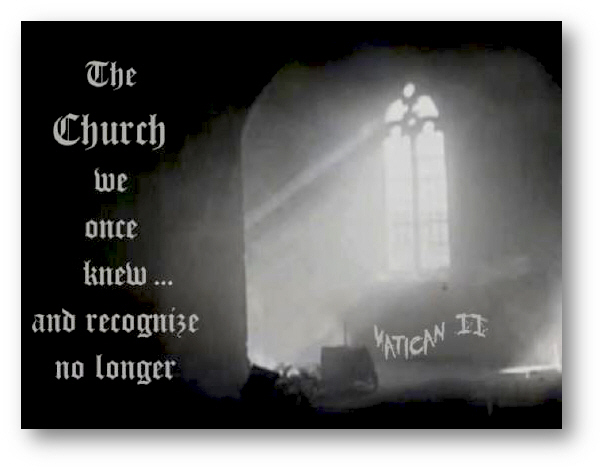
Has the
Post-Conciliar Church
Lost Custody
of the Faith?
All
indications are that is has
The “Dark Ages” — that disdainful
term for the period in history following the collapse of
the Roman Empire in 476 A.D. until the 15th century
(a period correctly described as the Middle Ages)
is understood by the secular world to have lasted
roughly 1000 years, beginning in Florence, Italy.
Within the post-Conciliar
Catholic Church, however, it appears that the term extends
well beyond the 15th century; indeed, some 500
years beyond it! According to contemporary Catholic thought
articulated within the past five papacies, the “Dark Ages”
really ended in 1965 at the conclusion of the Second
Vatican Council. All the doctrines and teachings prior
to that Council were only imperfectly, deficiently, and
insufficiently articulated or defectively understood.
The 1000 Years of Darkness
Only
the Second Vatican Council finally attained to enlightenment
in the divine economy, and after 1,965 years of suspension,
it alone has provided the final, sufficient, and correct
understanding of God and Church, man and nature. Prior to
that, according to post-Conciliar thought, Catholics had
essentially lived in darkness, specifically the darkness
of the “pre-Conciliar Dark Ages.” It may be said that where
the Rational Enlightenment “saved the world from religion,”
Vatican II saved the Church from Catholicism.
Continue reading
___________________________________________________________________________
Martyrology for Today
Semen est sanguis Christianorum (The blood of Christians
is the seed of the Church) Tertullian, Apologeticum,
50
2004 Roman Martyrology by Month
2004 Roman Martyrology

Thursday, December 18th in the Year of Grace 2025
This Day, the Eighteenth Day of
December
1.
At Jerusalem, Saint Modestus, bishop, who, after
the Holy City had been taken and laid waste by the Persians,
restored the monasteries and filled them with monks, and
with great labor repaired the sanctuaries destroyed by fire.
2.
At Eleutheropolis in Palestine, the passion of fifty
holy soldiers, who, in the time of the emperor Heraclius,
were slain for the faith of Christ by the Saracens besieging
Gaza.
3.
In Brittany, Saint Judicael, who greatly promoted
peace between the Bretons and the Franks, and, having laid
down the office of king, is said to have spent his life
in the monastery of Saint Méen.
4.
At Andenne in Brabant, Saint Begga, widow, who, after
the murder of her husband, founded the monastery of the
Blessed Virgin Mary, under the Rules of Saints Columban
and Benedict.
5.
In the monastery of Fulda in Austrasia, Saint Sturm,
abbot, who, a disciple of Saint Boniface, evangelized
Saxony and, at the command of his master, took care to have
this celebrated monastery rebuilt, and was its first abbot.
6.
On Mount Mercury in Lucania, Saint Christopher of Collesano,
monk, who, together with his whole family, devoted himself
earnestly to spreading the monastic life.
7.
Near Brussels in Brabant of Lorraine, Saint Vivina,
first abbess of the monastery of the Blessed Virgin
Mary of Bigards.
8.
At Rome on the Caelian Hill, Saint John of Matha, priest,
who, a Frenchman by birth, founded the Order of the Most
Holy Trinity for the Ransom of Captives.
9.
At Barcelona in Spain, Saint Joseph Manyanet y Vives,
priest, who, in order that all families might be made
perfect after the example of that holy family of Jesus,
Mary, and Joseph of Nazareth, founded the Congregations
of the Sons and of the Daughters of the Holy Family.
10.
In the village of Don Benito near Badajoz in Spain, blessed
Matilda of the Sacred Heart Téllez Robles, virgin, who,
seeing in her neighbor the image of Christ Himself, gave
herself with kindness and diligence, especially to the material
and spiritual help of the poor, and founded the Congregation
of the Daughters of Mary, Mother of the Church.
11.
At Rome, at Saint Sabina on the Aventine, blessed Hyacinth
(Henry) Cormier, priest, who, as Master General, prudently
governed the Order of Preachers, greatly fostering theological
and spiritual studies.
__________________________________________________________________
And elsewhere in divers places, many other holy martyrs, confessors, and holy virgins.
Omnes sancti Mártyres, oráte pro nobis.
(“All ye Holy Martyrs, pray for us,” from the Litaniae Sanctorum, the Litany of the Saints)
℟. Thanks be to God.
|
The 1956 edition below, issued during the pontificate of Pope Pius XII, is a revision of the typical edition of 1749, which had been promulgated by Pope Benedict XIV remained the foundational text for later updates throughout the 18th–20th centuries up to 2004 — the English translation of which remained the sole source of the Martyrology until the present translation of the 2004 Roman Martyrology by the Boston Catholic Journal in 2025.
|
|
1956 ROMAN MARTYROLOGY

Thursday, December 18th in the Year of Grace 2025
This Day, the Eighteenth Day of December
At Philippi, in Macedonia, the birthday of
the holy martyrs Rufus and Zosimus,
who were of the number of the disciples, by whom the primitive
Church was founded among the Jews and the Greeks. Their
happy martyrdom is mentioned by St. Polycarp, in his epistle
to the Philippians.
At Laodicea, in Syria, the martyrdom
of the Saints Theotimus and Basilian.
In Africa, the holy martyrs Quinctus,
Simplicius, and others, who suffered in the persecution
of Decius and Valerian.
In the same country, St. Moysetes,
martyr.
Also, in Africa, the holy martyrs
Victurus, Victor, Victorinus, Adjutor, Quartus, and thirty
others.
At Mopsuestia, in Cilicia, St. Auxentius,
bishop, who, while he was a soldier under Licinius,
preferred to surrender his military insignia rather than
to offer grapes to Bacchus. Having been made bishop, he
was renowned for merit, and rested in peace.
At Tours, St. Gratian, consecrated
first bishop of that city by
Pope St. Fabrian. Celebrated for many miracles, he calmly
went to his repose in the Lord.
Omnes sancti
Mártyres, oráte pro nobis.
(“All
ye Holy Martyrs, pray for us,” from the Litaniae Sanctorum, the Litany
of the Saints)
Response: Thanks be to God.
|
__________________________________________________________________________________________________________________________________
1959 Roman Martyrology by Month
__________________________________________________________________________________________________________________________________
Why the Martyrs Matter
Each
day we bring you a
calendar, a list really, of the holy Martyrs who had suffered
and died for Christ, for His Bride the Church, and for our holy
Catholic Faith; men and women for whom — and well they knew
— their Profession of Faith would cost them their lives.
They could have repudiated all three (Christ, Church, and Catholic
Faith) and kept their lives for a short time longer (even the
lapsi * only postponed their death — and
at so great a cost!)
What would motivate men, women, even children and entire families
to willingly undergo the most evil and painfully devised tortures;
to suffer death rather than denial?
Why did they not renounce their Catholic Faith when the first
flame licked at their feet, after the first eye was plucked
out, or after they were “baptized” in mockery by boiling water
or molten lead poured over their heads? Why did they not flee
to offer incense to the pagan gods since such a ritual concession
would be merely perfunctory, having been done, after all, under
duress, exacted by the compulsion of the state? What is a little
burned incense and a few words uttered without conviction, compared
to your own life and the lives of those you love? Surely God
knows that you are merely placating the state with empty gestures
…
Did they love their wives, husbands, children — their mothers,
fathers and friends less than we do? Did they value their own
lives less? Were they less sensitive to pain than we are? In
a word, what did they possess that we do not?
Nothing. They possessed what we ourselves are given in the Sacrament
of Confirmation — but cleaved to it in far greater measure than
we do: Faith and faithfulness; fortitude and valor, uncompromising
belief in the invincible reality of God, of life eternal in
Him for the faithful, of damnation everlasting apart from Him
for the unfaithful; of the ephemerality of this passing world
and all within it, and lives lived in total accord with that
adamant belief.
We are the Martyrs to come! What made them so will make us
so. What they suffered we will suffer. What they died for, we
will die for. If only we will! For most us, life will be
a bloodless martyrdom, a suffering for Christ, for the sake
of Christ, for the sake of the Church in a thousand ways outside
the arena. The road to Heaven is lined on both sides with Crosses,
and upon the Crosses people, people who suffered unknown to
the world, but known to God. Catholics living in partibus
infidelium, under the scourge of Islam. Loveless marriages.
Injustices on all sides. Poverty. Illness. Old age. Dependency.
They are the cruciform! Those whose lives became Crosses because
they would not flee God, the Church, the call to, the
demand for, holiness in the most ordinary things of life made
extraordinary through the grace of God. The Martyrology we celebrate
each day is just a vignette, a small, immeasurably small, sampling
of the martyrdom that has been the lives of countless men and
women whom Christ and the Angels know, but whom the world does
not know.
“Exemplum enim dedi vobis”, Christ
said to His Apostles: “I have given you an example.” And His
Martyrs give one to us — and that is why the Martyrs matter.
-
A Martyr is
one who suffers tortures and a violent death for
the sake of Christ and the Catholic Faith.
-
A Confessor
is one who confesses Christ publicly in times of persecution
and who suffers torture, or severe punishment by secular
authorities as a consequence. It is a title given only
given to those who suffered for the Faith —
but was not killed for it —
and who had persevered in the Faith until the
end.
Geoffrey K. Mondello
Editor
editor@boston-catholic-journal.com
Boston Catholic Journal
Note:
We suggest that you explore our newly edited and revised
“De
SS. Martyrum Cruciatibus — The Torments and Tortures of the
Christian Martyrs”
for an in-depth historical account of the sufferings of the
Martyrs.
____________________________
*
Those early Christians who renounced their Catholic Faith
in times of persecution. When confronted with the prospect
of torture and death if they held fast to their faith in
Christ, they denied Him and their Faith through an act of
sacrificing (often incense) to the pagan Roman gods and
in so doing kept their lives and/or their freedom and property.

Totally
Faithful to the Sacred Deposit of Faith entrusted
to the Holy See in Rome
“Scio
opera tua ... quia modicum habes virtutem, et servasti verbum
Meum, nec non negasti Nomen Meum”
“I
know your works ... that you have but little power, and
yet you have kept My word, and have not denied My Name.”
(Apocalypse 3.8)
Copyright © 2004 - 2025 Boston
Catholic Journal. All rights reserved. Unless otherwise
stated, permission is granted by the Boston Catholic Journal
for the copying and distribution of the articles and audio
files under the following conditions: No additions,
deletions, or changes are to be made to the text or audio
files in any way, and the copies may not be sold for a profit.
In the reproduction, in any format of any image, graphic,
text, or audio file, attribution must be given to the Boston
Catholic Journal.
|
|



